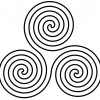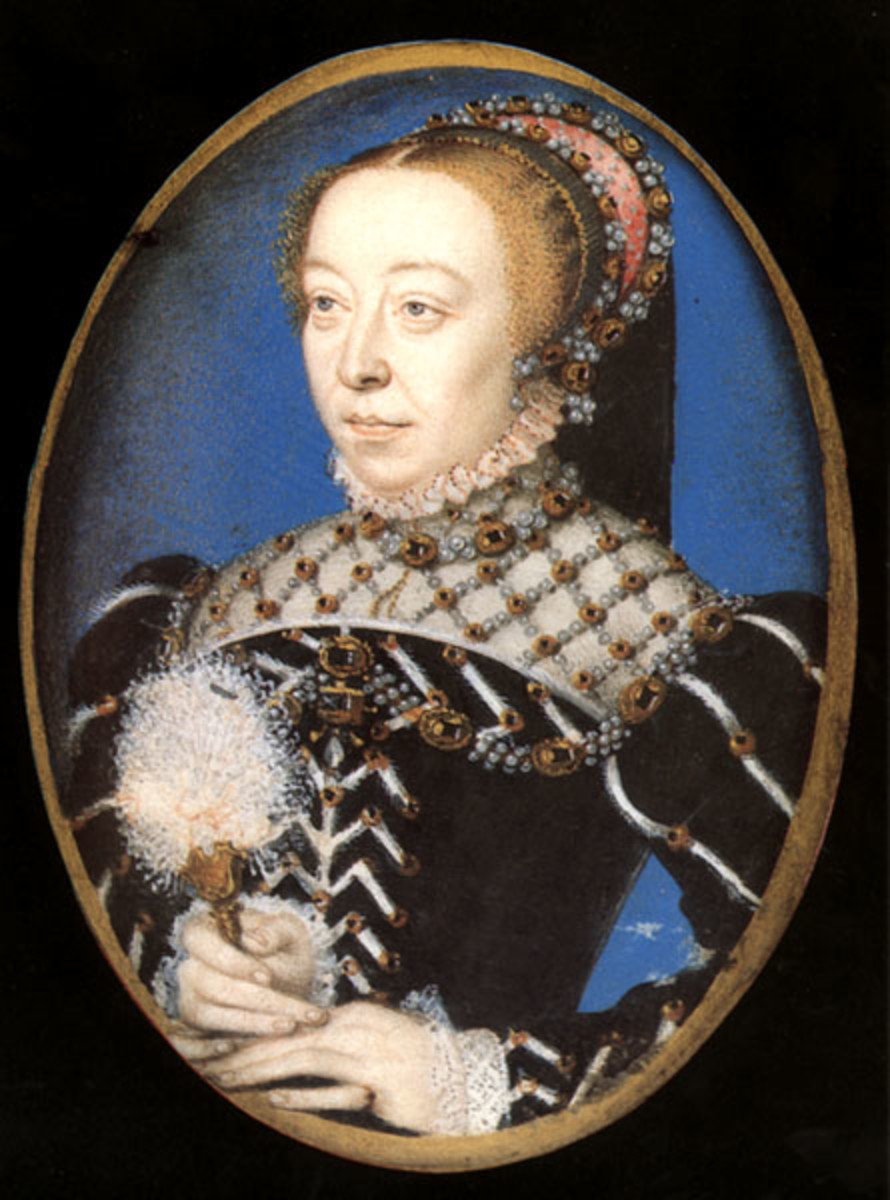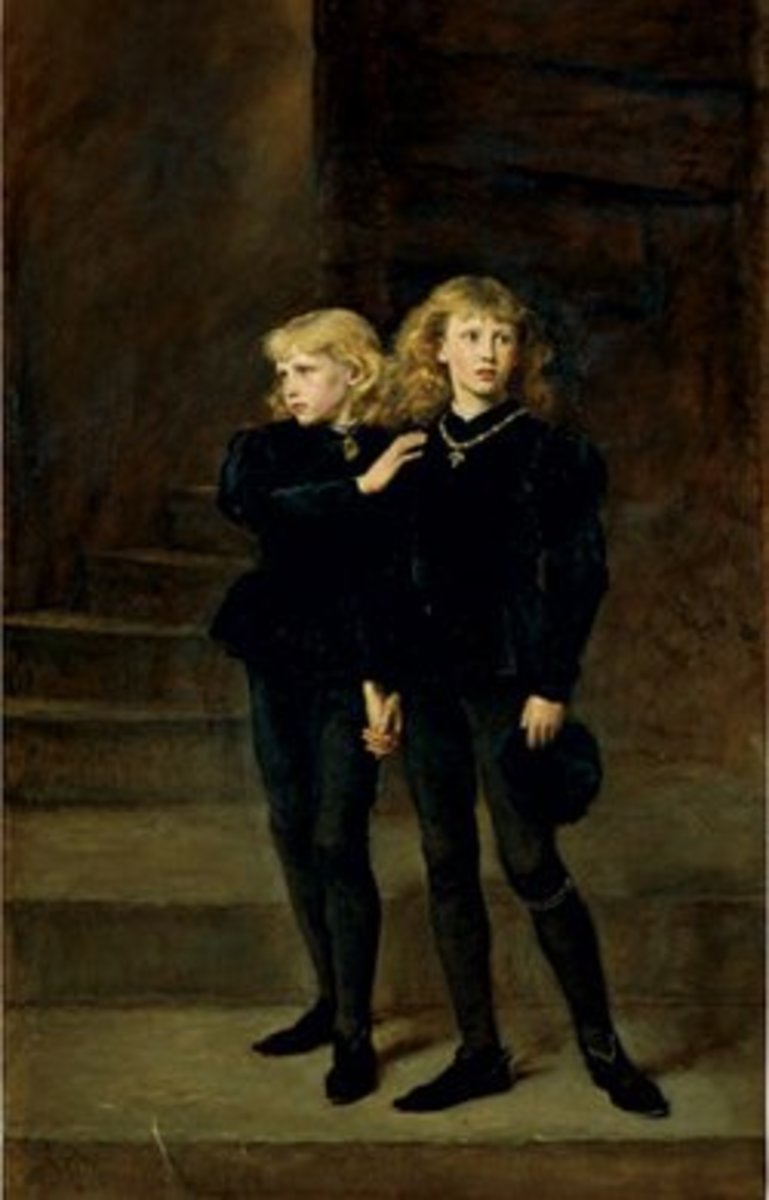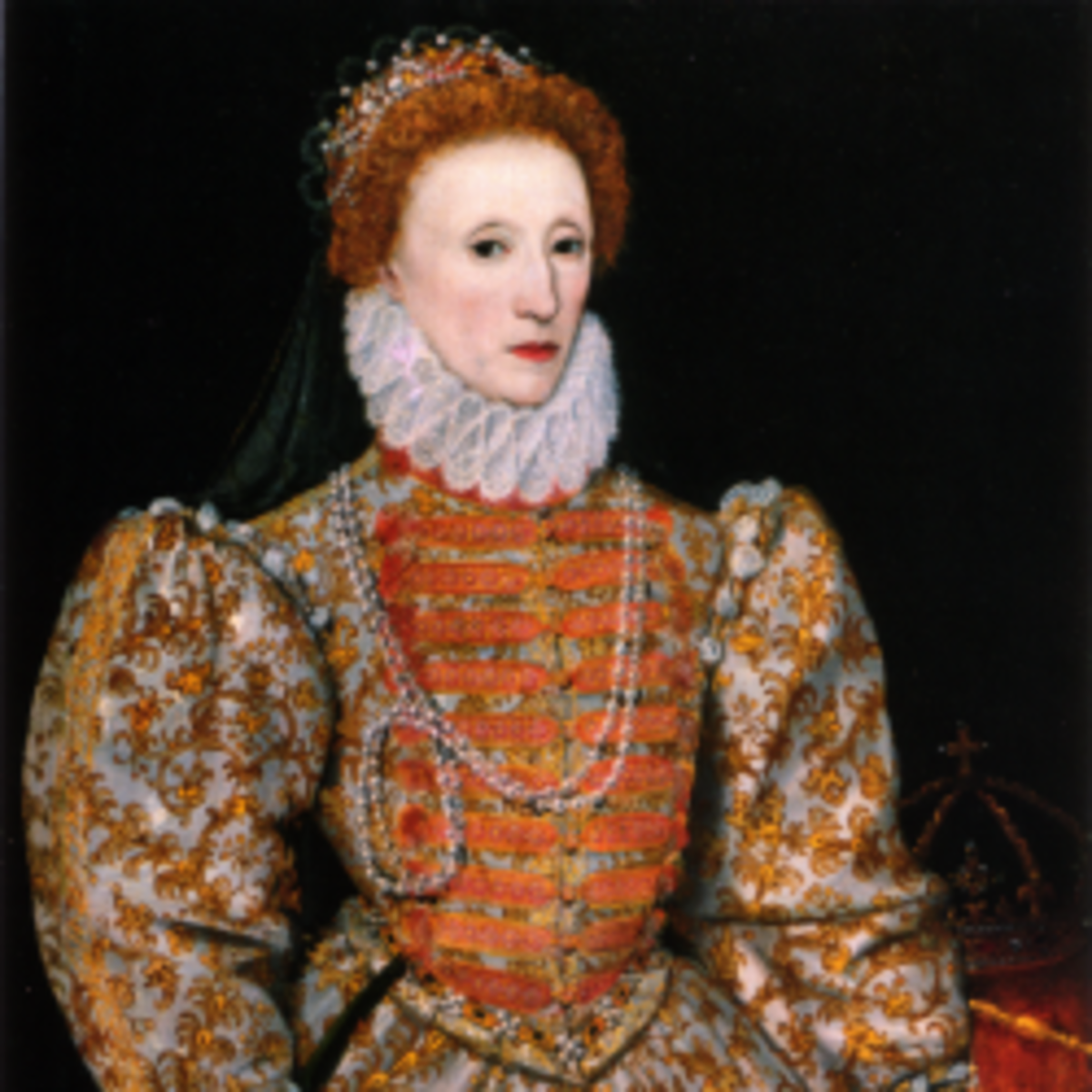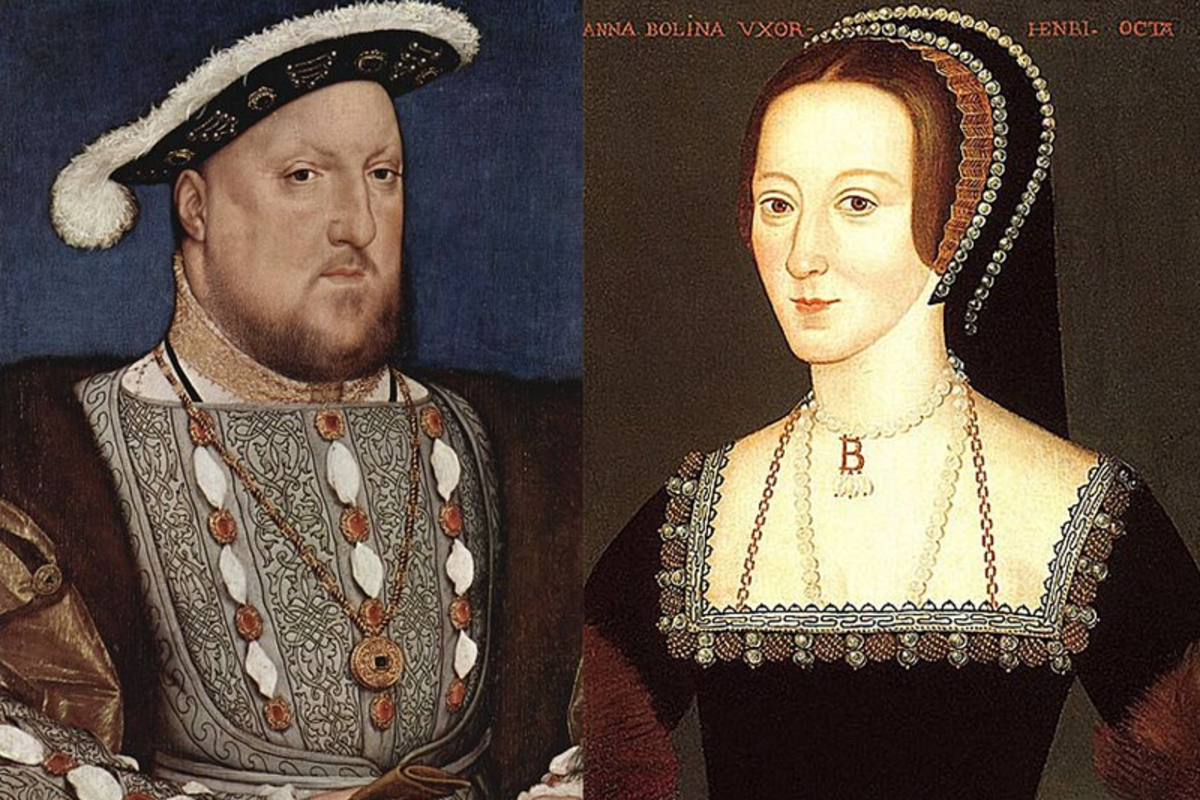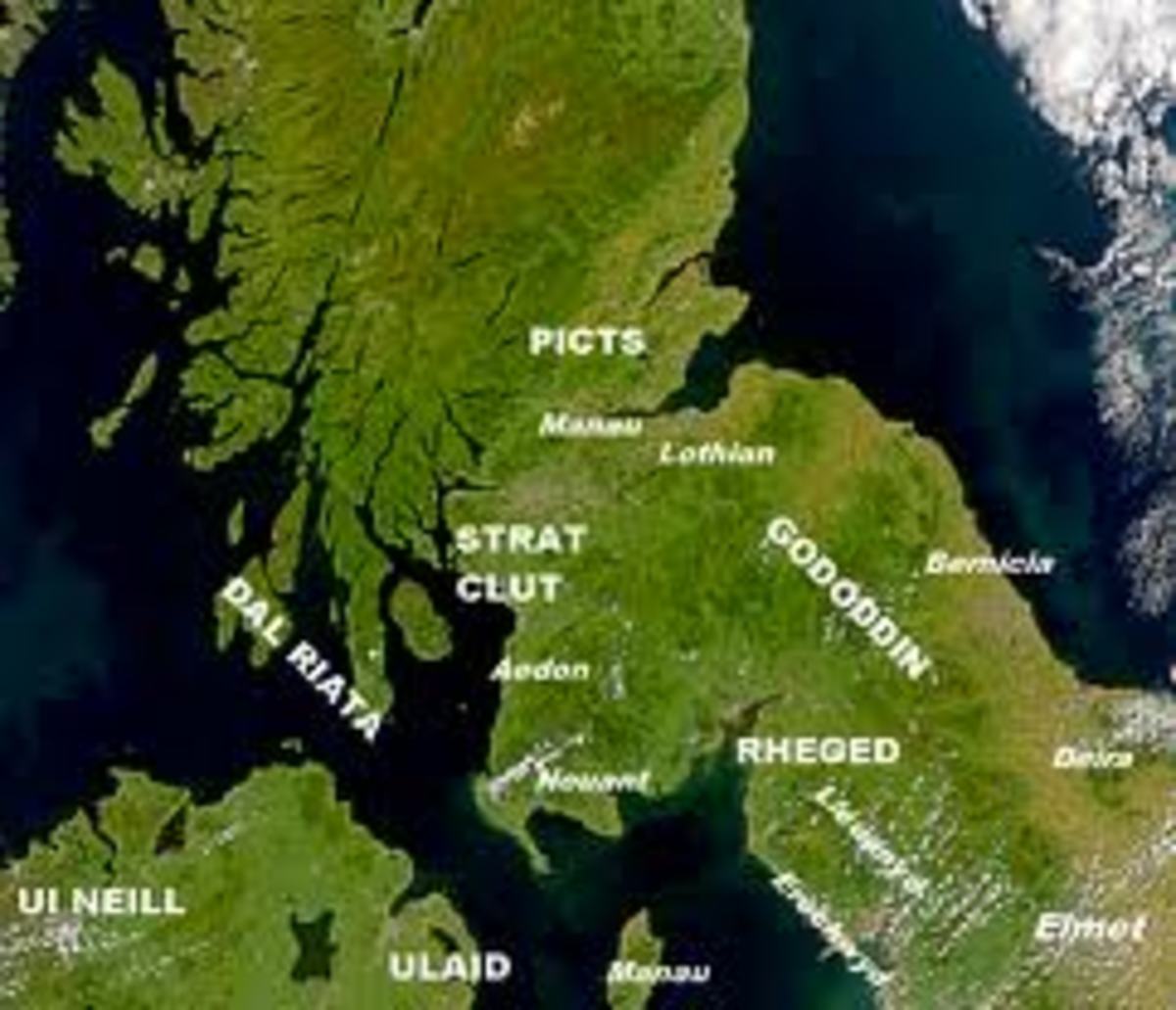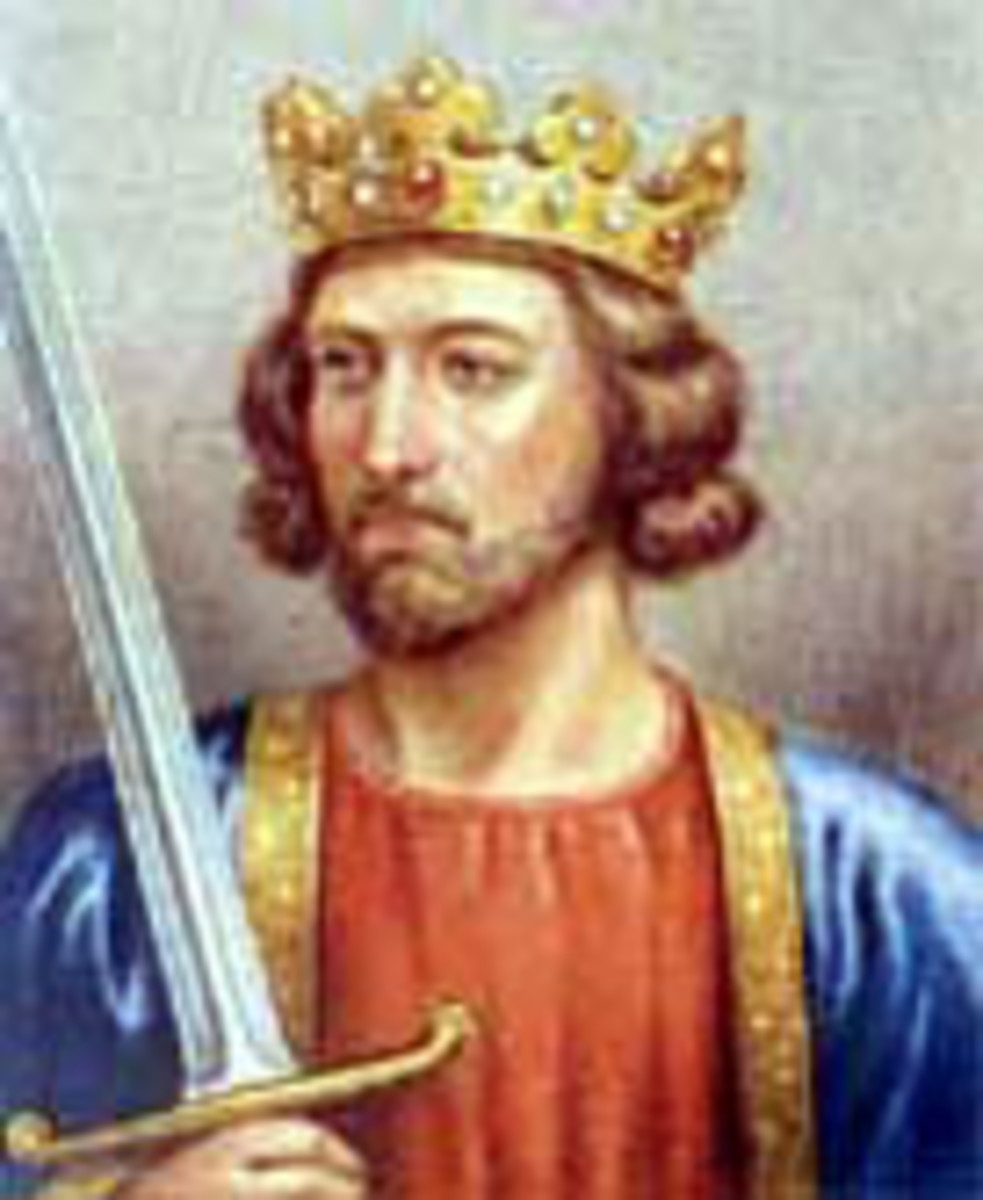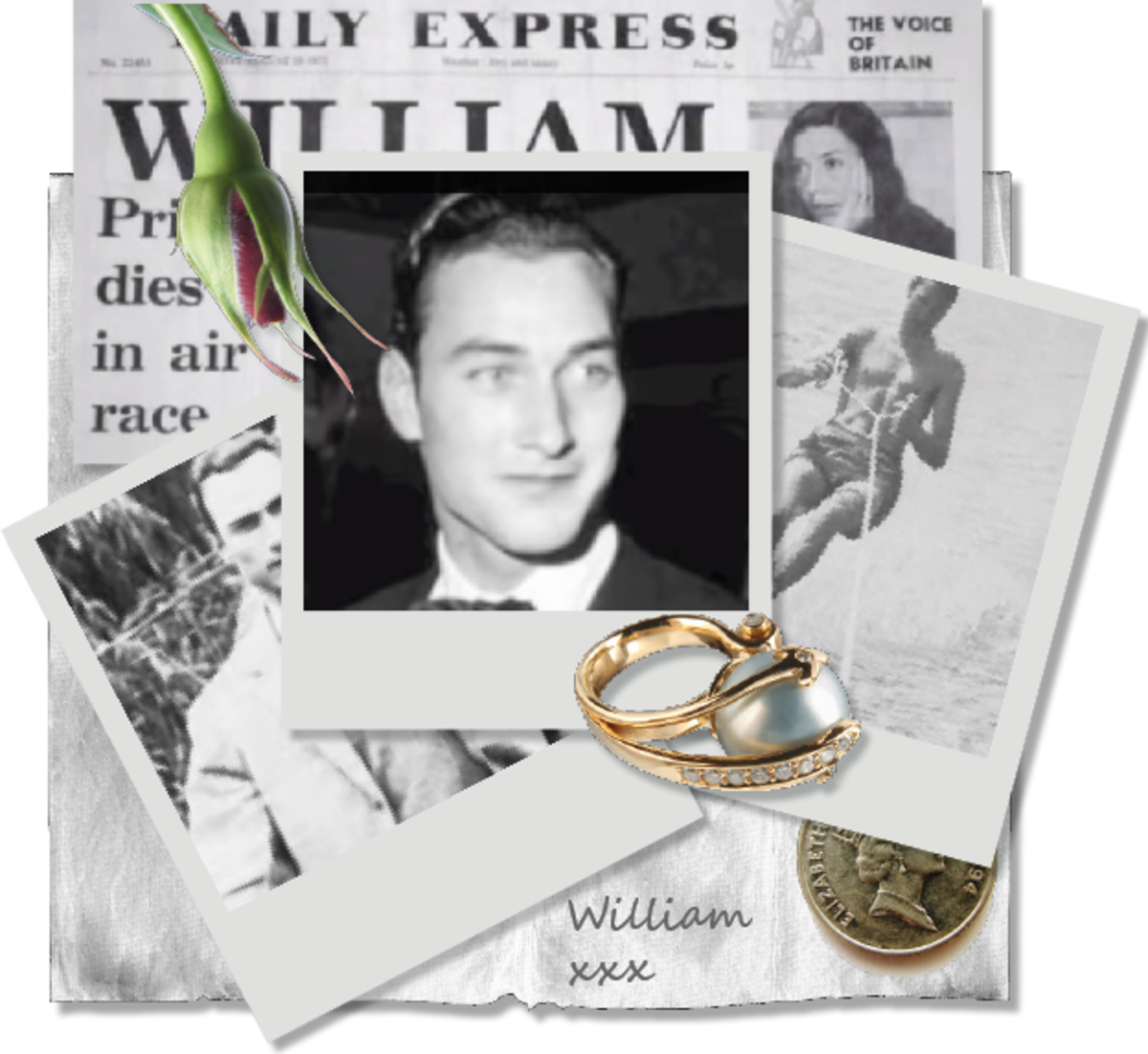- HubPages»
- Education and Science»
- History & Archaeology»
- History of Europe
Henry and Anne, True Love?
Henry the Eighth
Divorced, beheaded, died, divorced, beheaded, survived; this is the old rhyme that reminds budding historians about the tragic stories of the women who had the misfortune to marry Henry the Eighth. He was the English king notable for his careless attitude towards the easy disposal of unwanted wives. To Henry, the people of his court, including wives, were pawns in the game of monarchy, pieces to be moved around the board for his benefit and quickly discarded when they were of no further use to him. His courtship of, and marriage to, Anne Boleyn has always been the most notorious.
Henry's father
Henry the Eighth's whole motivation as king was that he was never secure on his throne. His father, Henry Tudor, snatched the crown from the rightful king, Richard the Third, at the Battle of Bosworth with the help of the Stanleys, who turned traitor. He became Henry the Seventh at that battle; then married Elizabeth, daughter of Elizabeth Woodville and Edward the Fourth (brother of Richard the Third), thus uniting the houses of York and Lancaster, ending the Wars of the Roses and bringing peace to the country. He always knew that as he had gained the throne through the treachery of the nobility he could lose it again just as easily. He lived his life in fear of plots and revolutions and passed that fear onto his son.
Personal Relationships
Anne Boleyn's downfall has often been attributed to the failure of her personal relationship with the king just as Catherine's abandonment and divorce has been partly attributed to her increasing age and loss of physical attractiveness. In both cases the personal relationship was of no importance. Henry always had his own agenda and the people around him were used for his own benefit. Henry was never 'in love' with Anne so he did not suddenly have her charged with treason and executed because he fell 'out of love' with her. If she had succeeded in giving birth to a son she may have survived a little longer but her early death was still inevitable.
Henry's Early Life
Henry had not been brought up to be king. He was the second son brought up among women, while his older brother Arthur, heir to the throne was Prince of Wales and had his own household from birth. As a fifteen year old Arthur was married to the beautiful, blond-haired Spanish princess, Catherine of Aragon, in the year 1501.
All that changed and Henry's prospects changed dramatically when Arthur died suddenly five months after the wedding. Henry became heir to the throne, taking his brother's place and becoming second in importance only to his father, the king.
Catherine stayed on at the English court after the death of her young husband, Arthur. She remained a dependant of Henry the Seventh for seven years. In April 1509 Henry the Seventh died and his son became Henry the Eighth, recognised and accepted by all. One of his first decisions on becoming king was to marry Catherine. He needed a dispensation from the Pope in order to do this because she was his brother's widow. This was easily granted and they were married in June 1509. In marrying Catherine he was, in a sense, stepping into his brother Arthur's shoes and bolstering his claim to be worthy to inherit the throne.
Henry never again married a woman who was superior to him by birth and pedigree as Catherine had been. He was eleven years old when his brother Arthur died and he became Prince of Wales and heir to the throne. He was just turning eighteen when his father died and he became king.
Catherine and Henry's children
In January 1510 Catherine gave birth to a stillborn daughter. In all, she bore Henry six children, including three sons, but all of them died except for one, their daughter Mary, born in 1516. In the eyes of his fellow countrymen Henry needed to show that he had the approval of God. He had to be able to present himself as God's chosen one, God's anointed king. When he failed in his duty to have a son and heir, which was deemed essential for the peace of the kingdom, it looked as though Henry's claim to the throne was not sanctioned by God and was weak and invalid. No one wanted a return to the Wars of the Roses. Henry needed a scapegoat and so turned on the person nearest to him, his loyal wife Catherine.
Henry's Obsession
Seemingly due to his obsession with and devotion to Anne, Henry indulged in some extreme behaviour. He put aside his loyal wife, abandoned Catholicism and the Pope, started the Church of England, closed the monasteries and took their property and had many good and holy people horribly executed. How and why then did he so suddenly and vindictively turn against her? Her fall has been attributed to a complicated conspiracy by Thomas Cromwell and others to turn the king against he and invent the most astonishing list of crimes with which to accuse her. Even Anne in her speech at her execution seems to absolve Henry of all blame, but as always the decision lies entirely with Henry.
Catherine's Death, Anne's Downfall
When Catherine died on 7th January 1536 Henry and Anne danced and celebrated. Anne was pregnant again and would surely have a son this time so her position must finally be secure. In fact, the opposite was true; Anne only had five months left to live. She would be arrested on 2nd May 1536 and executed on 19th May. Henry needed to draw a line under the whole miserable business of 'saintly Queen Catherine' and 'wicked Queen Anne' and make a fresh start. He needed a scapegoat again.
The separation from Rome and the dissolution of the monasteries was a terrible upheaval for the country. The people depended so much on the monasteries for their spiritual welfare, their social welfare in times of need, their medical treatment, their education; their social and spiritual sustenance. The Reformation in England was imposed from the top. Protestantism was a foreign import and public resistance persisted until the 1570s.
Henry gave the job of organising Anne's downfall to his faithful servant, Thomas Cromwell. The charges against her had to be so outrageous and even include her own brother so that the common people, the nobility and the courts of Europe would know that they were exaggerated. This would reduce the insult to the king's manliness which would result from the charge of adultery against the queen. It was essential that she was charged with adultery because this guaranteed the sentence of death which the king was determined on.
These charges, including incest with her brother,also implied witchcraft as witches were believed to be promiscuous. If Anne were indeed believed to be a witch this further reduced the king's responsibility for this most unsuitable marriage and all of its unfortunate consequences. Anne was his excuse for turning against Catherine and the Church. She was also his excuse, with the help of Tudor propaganda for the looting of the monasteries and the magnificent cathedrals.
Marriage in Tudor Times
In Tudor times marriage among the nobility was not dependant on romantic love but was a civil contract between two people, blessed by the church and involving their two families. The bride and groom would hardly know each other and would certainly never spend any time alone together because of the absolute necessity of preserving the bride's virginity until the wedding night when the successful consummation of the marriage was a very important, in fact essential part of the contract.
This was the case in Catherine and Arthur's marriage when the question of consummation became all-important; because the marriage had not been consummated they were not legally married and Catherine was therefore still an unmarried virgin and free to marry Henry. Henry. of course, accused her of lying when he wanted to end the marriage.
The necessity of the bride's virginity was ultimately about land and property. A man must be absolutely sure that his title, land and property will be inherited by his son and there can be no doubt as to the paternity of his heir.
The King's Mistress
It was understood of course, that the king would have a mistress, certainly as soon as the queen became pregnant. Tudor doctors believed that sex during pregnancy to be damaging to the baby and was to be avoided. A royal baby and potential heir was all-important and no risks could be taken. The king taking a mistress was actually a positive sign that the queen must be pregnant. A wise queen did not complain. There was never the slightest possibility of the king divorcing the queen and marrying one of these women. A young woman would have a suitable marriage arranged for her when the king had no more need of her.
It was perfectly acceptable for the king to bring his illegitimate son to court and acknowledge him. Henry Fitzroy, the king's fine handsome son by his mistress, Bessie Blount, was brought to court and given titles and lands.
Whilst it was accepted for the king to have a mistress, expected even, it was life-threatening for the queen to be even suspected of having a lover. The son she gives birth to will inherit the throne. There must be no question as to his paternity. Allowing another man's son to inherit would be treason and punishable by death. In the hothouse of the Tudor court, constantly surrounded by people it would have been impossible for the queen to stray. Anyone who knew would have to tell or be guilty of deceit and equally at risk of the ultimate punishment.
Ladies-in-Waiting
The predatory men at the Tudor court would have been in constant competition for the favours of the young ladies-in-waiting, the king of course, being the top predator. As time passed it would become more and more important for him to maintain this status. The ' English rose' type of girl with her fair skin and fair hair, as Catherine had been, was the ideal of female beauty most admired at the time. When Anne arrived at court with her self-confidence, her olive skin and dark hair and eyes, her French fashions and her French hood she must have created quite a stir.
Anne and her older sister Mary had spent their teenage years at the French court as ladies-in-waiting. Mary Boleyn returned to England first while Anne stayed on in France. Mary went to the English court as one of the ladies-in-waiting to Queen Catherine while her family arranged her marriage but this was delayed when she caught the eye of the king and he chose her as his mistress. It is unclear how much choice these young women would have had in this situation. Having been selected by the king a young woman was unlikely to turn him down - until Anne of course. If a girl decided to be brave and refuse the king it might make life difficult for her family as well as herself. They would fall out of favour but if she did co-operate then her family could benefit in the form of influence, land and property.
Anne Boleyn at Court
Anne returned to England in 1522 at the age of 22 and went to the Tudor court as lady-in-waiting to Queen Catherine while her marriage was arranged. Two of her potential marriage contracts did not proceed, one with the heir of Ormonde and one with Henry Percy. Was this because the king was interested in her? Did this give Anne the courage and determination to refuse to become his mistress and insist on becoming his wife? Her own marriage prospects were becoming limited as time passed. She would have known that the king had already had Arthur and Catherine's marriage annulled so it should be possible for him to have another marriage annulled.
To Henry, Anne, or any other young woman of the court was a potential trophy to flaunt his superiority over the other men. Just as in any other courtly pastime; jousting or hunting, poetry or dancing, Henry always had to be the top, even more so as time went on and his rivals were younger. The fact that he had taken her older sister as his mistress would have made Anne more tempting; the conquest of two sisters would have been even more of a triumph. Henry would have professed undying love, have promised anything to achieve this and having once made clear his intentions he could not back down and be seen as a fat, middle-aged failure, a bit of a joke.
Would Anne Boleyn, a young woman in her early twenties, have found fat, middle-aged Henry Tudor all that attractive? If she did find him utterly irresistible why did she make him wait seven years? In demanding marriage, she was copying the example of Elizabeth Woodville, Queen to Edward the Fourth and maternal grandmother to Henry the Eighth, who was said to have told King Edward she would only be his wife, not his mistress.
Power and Wealth
It may have been Anne who planted the seed of the idea in Henry's mind that in her he could have a new, young wife who would give him a healthy son and so consolidate his power. It was Henry who persisted against all reason to break with Rome, divorce his wife, disinherit his daughter and marry Anne. She suited his purposes at the time and when she no longer suited he got rid of her. He had written her romantic letters because Henry, although middle-aged at the time wanted to appear as a young, lusty king.
Everyone and everything in the country ultimately belonged to the king and he had absolute power. It must have galled him to see that the church was beyond his power and even the king had to depend on the church to mediate between himself and God.
Thomas Cromwell may have planted the idea in Henry's mind of getting rid of the monasteries and claiming their property. They had been so long established in the country and were so much a part of people's everyday lives it must have been a very radical idea. It was Henry who broke with Rome, killed the monks, sold their land and property, became immensely rich and so consolidated his power. He invented the Act of Supremacy knowing as he did that they would never be able to swear to it.
Henry Moves On
Henry and Anne were married for three years, from January 1533 until My 1536. They had one healthy child, a daughter, born in September 1533. Henry gave her his mother and grandmother's name, Elizabeth, to bolster again his claim to the throne by reminding everyone that his family represented the unity of the houses of York and Lancaster and the promise of peace.
Before Anne was even arrested Henry had already chosen a new younger wife, Jane Seymour, to replace her. The wedding which took place eleven days after Anne's execution had to proceed with the same extreme haste as Anne's arrest and execution.
He convinced himself that he had been deceived in marrying Catherine; he had been bewitched in marrying Anne. Now, at last, in Jane he had found a true wife who proved his kingliness by immediately becoming pregnant and bearing him a son, thus finally cementing his position as God's chosen, anointed king ruling his kingdom by divine right.
As he grew older and naturally began to lose his great physical strength and athleticism Henry became more insecure, angry, frightened and dangerous. The killings increased and he turned on everyone he had ever trusted.
© 2016 Helena Doherty
